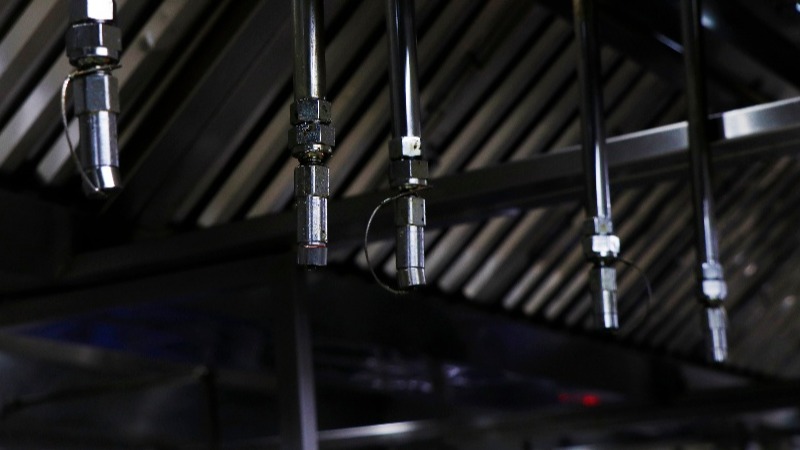Making the Switch: Vendor Transition Guide
Switching fire and security vendors feels risky. Even if your current provider isn't meeting your needs, the thought of transitioning systems and...
 |
Fire protection professionals committed to safeguarding lives, property, and peace of mind. |
 |
Solutions designed for your property type, from multi-family housing to healthcare facilities to retail spaces. |

|
Fire alarm, area of refuge, camera, and card access monitoring services. |
 |
Clear communication and instant response when every second counts. |
 |
From kitchens to server rooms, the right protection for every space. |
 |
Keep your primary defense system ready and reliable. |

|
Manage all your properties' access from one simple platform. |
 |
Monitor multiple properties in real time from anywhere, at any time. |

|
Document upcoming maintenance appointments and improve your proactive budget planning. |
 |
Fire Extinguisher Maintenance Checklist Learn the requirements for testing extinguishers monthly, annually, and beyond. |

|
Track all your inspection deadlines in one place. |
 |
Kitchen Hood Inspection Checklist Ensure your kitchen hoods are safe and compliant. Download a complete list of testing requirements. |

|
Guide to Fire & Security Monitoring Your complete property protection handbook in practical terms. |

|
Running a food truck takes work—this guide gives you the tools to keep it safe and up to code. |
 |
Comprehensive Guide to NFPA 13 and NFPA 25 Fire Sprinkler Systems Navigate sprinkler system requirements with confidence using our straightforward guide to codes and maintenance. |

|
Get your essential compliance guide. |
 |
When reliability matters across 18 restaurants, micromanagement doesn't. |
2 min read
Brothers Fire & Security : December 21, 2023

Kitchen fires are dangerous and quickly get out of control. Fire requires the presence of three things to survive: fuel, oxygen, and heat. In kitchen fires, the fuel is almost always fat, grease, or oil—which are highly flammable, hot, and spread quickly, particularly if you dump water on them. For this reason, kitchens require a specialized fire suppression system to detect and extinguish fire.
Know how these systems work, and make sure they're properly maintained. It can mean the difference between a minor incident and a catastrophic loss.
We walk you through the components, operation, and importance of kitchen hood fire suppression systems, plus what you need to know to stay compliant with current fire codes.
Kitchen hood fire suppression systems work to prevent kitchen fires from escalating. They're typically installed directly above individual cooking stations and appliances, thereby making fires easier to contain.
How does a kitchen hood fire suppression system work?
A kitchen fire hood suppression system consists of the following components:
Similarly to fire sprinkler systems, these fire suppression systems get activated when they detect fire or excessive heat. However, they can also be manually activated in case they do not sense the heat of a fire early enough.
When activated, the kitchen hood suppression system discharges chemical agents through the nozzles instead of water. The chemical agent is a specially formulated extinguishant that suppresses fire and prevents re-ignition through saponification—a process where the agent combines with the grease to create a soapy layer that seals off the fuel from the oxygen.
The fire suppression system will also shut off the gas control valve to starve the fire of its fuel or prevent it from accessing an additional fuel source. It will also cut off power to the appliances to prevent sparking and eliminate shock hazards.
Once the fire is out, fans in the kitchen hood will activate and work to remove smoke from the kitchen.
The primary reason kitchen fires should not be put out with your standard dry chemical fire extinguisher is the high temperatures at which oil and grease burn. As such, you need a K-1 extinguishant that will reduce the temperature of the fire to prevent a reflash.
Kitchen fire hood suppression systems are designed for use in commercial or industrial kitchens (food trucks, too) to prevent fires. They're specially designed to put out fires without ruining kitchen equipment, food, and produce.
It’s less expensive to prevent kitchen fires than to repair the structural damage of one. The damage caused by a kitchen fire can cost a fortune to repair—not to mention the risk of injury to patrons. Kitchen hood fire suppression systems restrict fire damage to an individual cooking surface, as they’re made to keep a fire from getting out of control.
You also don’t have to shut down your kitchen after a fire. Workers can quickly and easily clean up after an incident since only one station and the food in it gets affected.
Before installing just any fire suppression system, discuss your options with a fire safety professional. For one, these fire systems must legally comply with local fire codes and must be tailored to your kitchen. Once installed, stay up-to-date on required maintenance and cleaning, so your kitchen hood fire suppression system works as intended when an emergency occurs.
Before installing just any fire suppression system, discuss your options with a fire safety professional.
These systems must comply with NFPA 96 standards and Minnesota State Fire Code requirements. Regular inspections and maintenance are required to ensure your kitchen hood fire suppression system works as intended when an emergency occurs.
Your fire suppression system protects your investment. Make sure it works when you need it.
If you need guidance on system requirements or maintenance schedules, Brothers Fire & Security has been helping Minnesota businesses stay safe and compliant since 1994. Learn more in our fire safety guide or get in touch.

Switching fire and security vendors feels risky. Even if your current provider isn't meeting your needs, the thought of transitioning systems and...

Your fire alarm shows a trouble signal. Last week's sprinkler inspection never happened, and despite three calls and multiple messages, your vendor...

Winter weather and holiday demands can make managing multi-location security a nightmare. Fall is your best window to upgrade security systems,...